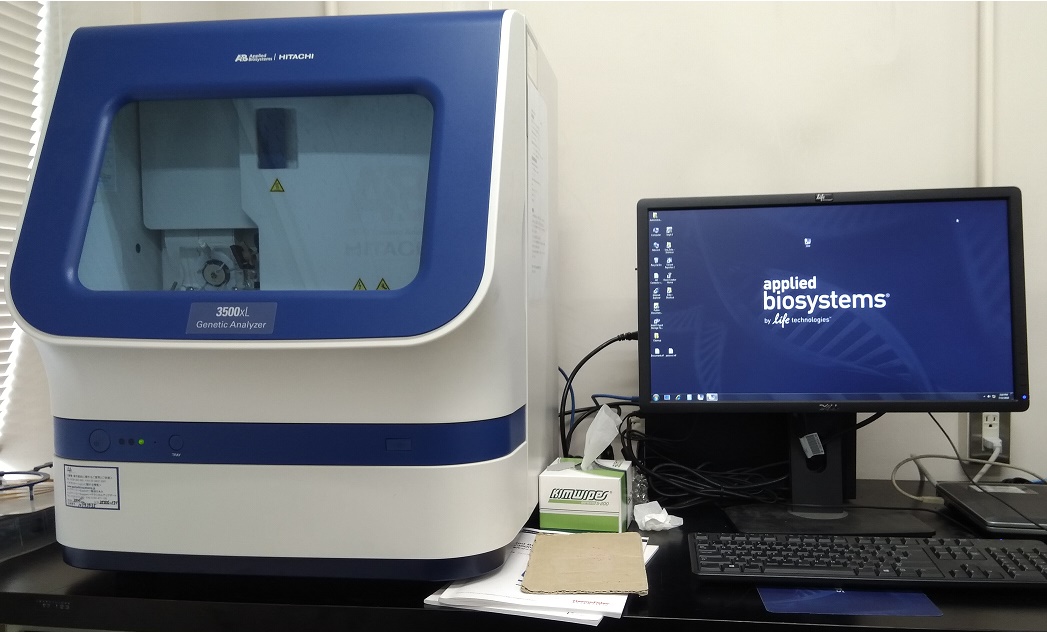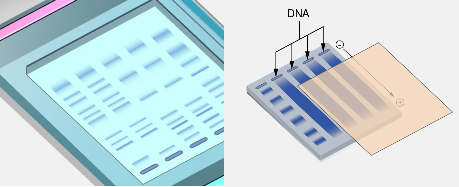Biotechnology uses the tools of molecular biology (i.e. genetic engineering) to produce novel products through the sole manipulation and modification of the genes and gene products of living systems including microorganisms. It borrows scientific expertise from a wide array of disciplines including but not limited to biochemistry, biology, genetics, chemistry, microbiology and molecular biology. Microbial cells for biotechnological applications are engineered through different high-throughput techniques to generate improved strains of microorganisms for better metabolic activities and industrial applications.
High-throughput techniques are series of experimental procedures that incorporates an array of advanced equipments/instruments and molecular biology protocols including genomics, proteomics, fluxomics, metabolomics and the rest for the sole purpose of generating large amounts of Omics data that helps scientists to better understand the metabolic and cellular activities of microorganisms at the system level. It allows researchers to perform series of experiments rapidly and simultaneously instead of conducting them one after the other.
Through high-throughput technologies, improved strains of microorganisms that are competent and productive enough for commercial productions of desired goods and services can be generated. High-throughput techniques helps researchers to better understand biochemical processes of living organisms and use the knowledge acquired to develop useful products that has applications in health, agriculture, the environment and industries. It is a cost-effective and commercial way of conducting research and development in the biosciences.
Omics is a collection of fields or studies that looks at the cellular functions, structure and genetic make-up of an organism. It is often used as a suffix when talking about specific fields that analyzes the intracellular activities of a cell; and Omics encompasses studies on the genome (genomics), RNA (transcriptomics), metabolites (metabolomics), and proteins (proteomics) components of a cell.
In terms of instrumentation, some of the instruments/equipments used for biotechnological processes may include pH meter, microscope, water bath, electrophoretic machine, incubator, DNA sequencing machine, thermocycler, electrophoresis machine, centrifuge, amino acid analyzer, isoelectric focusing apparatus, mass spectrometer amongst others. Microorganisms, their metabolic products and the enzymes they produce can be used as molecular tools in biotechnological processes.
GENOMICS TOOLS
Genomics is the sequencing and analysis of the genetic make-up of an organism. The genetic make-up of an organism also known as genome is the composite of all the genetic information and material an organism possess. It is the entire genetic complement of an organism. Through genomics, a high-throughput technique, the genome of an organism can be analyzed and deciphered for the presence of genes that encode a particular protein, enzyme or product of interest. Such gene is further manipulated, modified and engineered to produce such products in commercial amounts.
The genetic make-up of an organism is the starting point for any genetic manipulation of a living organism because it is the genome (that comprises of the organism’s DNA) that tells us what the organism can do and cannot do. Thus, genomics allows a biotechnologist to know the specific biological function of individual genes and proteins of a living cell. Such knowledge allows for easy manipulation and modification to produce a desired byproduct. Today, the genome of some living organisms including humans have been completely sequenced, and this gives a better understanding of their metabolic activities – a panacea to finding solutions to some health related problems. DNA sequencer is the equipment used for genomics analysis.
PROTEOMICS TOOLS
Proteomics is the measurement of the protein function of an organism in relation to its gene expression. It is the study of the structure, function and regulation of the proteins of an organism. Proteomics allows the analysis of the protein complements of the cell and its other components using high-throughput systems. Proteomics is a veritable tool for investigating protein changes induced by various pathological conditions in living systems; and coupled with bioinformatics studies (which uses computers to obtain biologically interesting information from a sequenced DNA, gene or genome data), the functions of unknown protein molecules could be unraveled.
Mass spectrometry, Matrix Assisted Laser Desorption Ionization-Time of Flight (MALDI-TOF), Surface-Enhanced Laser Desorption Ionization-Time of Flight (SELDI-TOF) and high performance liquid chromatography (HPLC) are some of the analytical methods used for proteomics studies. MALDI-TOF is a high-throughput molecular biology technique that is primarily used to measure the masses of peptides in biological samples (e.g. serum) during protein identification while SELDI-TOF is a proteomic technology routinely used in molecular biology laboratories for the rapid identification of biomarkers specific for cancerous cells in the proteomes of both tissue fluids and body fluids.
Both MALDI-TOF and SELDI-TOF are high-throughput techniques (proteomics procedure in particular) and they are based on the principle of mass spectrometry (MS). Proteins help in regulating most of the cellular and metabolic activities of the cell of an organism. Thus by profiling the proteins of the cell (i.e. proteome profiling), more insight can be obtained about the true workings of the metabolic and cellular activities of the cell as it relates to protein regulations. Proteomics is the large-scale systematic analysis of the proteins in a cell, tissue or genome. These proteins are generally known as proteome, and it is the entire protein complement that a cell or genome expresses at any given time.
Proteome is the total number of proteins encoded by the genome of an organism. It is the protein complement of the genome of a cell. Proteomic analysis is carried out using the 2-dimensional gel electrophoresis (2DGE) or chromatography in addition to mass-spectrometry (MS). The use of proteomic technologies amongst other high-throughput techniques in medical and biomedical research is often limited in the developing countries due to the high costs of the equipments, software’s, databases and skilled personnel to carry out such research. Proteomics technologies are largely applied to develop vaccine candidates, in the development of novel drugs and for the development of novel diagnostic biomarkers for early disease detection especially cancer and other infectious and molecular diseases.
TRANSCRIPTOMICS TOOLS
Transcriptomics is the measurement or analysis of the expression levels of the mRNA of the cell. It is the evaluation of the transcription stage of gene expression in an organism in order to monitor the relative level of transcriptome (the total set of mRNA produced in an organism) in the cell. Transcriptomics analysis allows scientists to know potential genes of target in the metabolic pathway of an organism to be manipulated and engineered for increased performance and increased production. Transcriptomics is carried out using certain high-throughput equipment known as DNA microarray.
FLUXOMICS TOOLS
Fluxomics is the measurement and determination of fluxes or changes in the metabolic pathways of the cell. Variety of changes (or fluxes) occurs during the catabolic and anabolic processes of an organism. Such fluxes are usually difficult to be measured real-time. But through fluxomics analysis, the different fluxes that occur inside a cell (i.e. during its metabolic activities) can be profiled and used to better understand its metabolic and cellular activities in vivo. High-throughput equipments for fluxomics experiments include flux and isotopomer balance.
METABOLOMICS TOOLS
Metabolomics is the quantitative measurement of the metabolome of an organism or the cell. Metabolome is the complete set of small molecules, metabolites or metabolic intermediates found in a cell or an organism. Metabolomic analysis allows scientists to elucidate the true state and function of the physiology of the cell. Profiling the metabolome of the cell helps biotechnologists to better understand the distribution of metabolites and fluxes in the cell. Some high-throughput equipments used for Metabolomic analysis include nuclear magnetic resonance (NMR), gas chromatography time-of-flight (GC-TOF), gas chromatography-mass spectrometry (GC-MS) and liquid chromatography-mass spectrometry (LC-MS)
BIOINFORMATICS TOOLS
Bioinformatics is simply defined as the application of information technology (e.g. computational tools such as computers) in the analysis, storage, recovery, manipulation, interpretation and distribution of biological data. Biological data are usually stored in databases where they can be easily analyzed and manipulated to solve complex biological problems; and the combination of biology and information technology in doing biomedical and medical research looks very promising to unravel the genetic basis of some molecular diseases of man in the future. Databases are series of catalog or information bank systems such as the “GenBank” where molecular/genetic data from biological system are stored for easy analysis, manipulation and comparison; and such information also serves as reference points for the comparison of new sequences to previously stored sequences in databases in order to elucidate their evolutionary relationship.
With the applications of bioinformatics in biomedical and medical research, experiments conducted in the laboratory (either in vivo or in vitro)can be complemented with virtual experimentation carried out in specialized computers where biological data are stored. Bioinformatics is a computer-based discipline that also includes mathematical and statistical models in the analysis of large biological data example DNA, proteins and RNA. Scientists can analyze and interpret the complex nature of biological systems especially as it relates to biological macromolecules.
Functional genomics, proteomics, DNA sequence analysis, protein structure, protein sequence, the expression of gene and the biochemical pathways of living systems can also be analyzed and interpreted in a concise fashion through the application of bioinformatics. As a computational biology, bioinformatics which has revolutionized the way that medical and biomedical research is conducted allows scientists to decode complex biological observations to a model that supercomputer will understand. Bioinformatics provides valuable in silico tools with which to carry out and iterate virtual experiments in the laboratory.
References
Bains W (1998). Biotechnology: From A to Z. 2nd ed. Oxford University Press, New York, USA.
Bourgaize D, Jewell T.R and Buiser R.G (1999). Biotechnology: Demystifying the Concepts. Pearson Education, San Francisco, CA.
Brian Robert Shmaefsky (2006). Biotechnology 101. Greenwood Publishing Group, Inc, USA. Pp. 1-273.
Bushell M.E (1998). Application of the principles of industrial microbiology to biotechnology (ed. Wiseman, A.) Chapman and Hall, New York. Pp. 5–43.
Byong H. Lee (2015). Fundamentals of Food Biotechnology. Second edition. Wiley-Blackwell, New Jersey, United States.
Chrispeels M.J and Sadava D.E (2002). Plants, Genes, and Crop Biotechnology. 2nd edition. Jones and Bartlett Publishers, Sudbury, MA.
Clark D.P and Pazdernik N (2010). Biotechnology. First edition. Elsevier Science and Technology Books, Amsterdam, Netherlands.
Das H.K (2010). Textbook of Biotechnology. Fourth edition. Wiley edition. Wiley India Pvt, Ltd, New Delhi, India.
Dictionary of Microbiology and Molecular Biology, 3rd Edition. Paul Singleton and Diana Sainsbury. 2006, John Wiley & Sons Ltd. Canada.
Glick B.R and Pasternak J.J (2003). Molecular Biotechnology: Principles and Applications of Recombinant DNA. ASM Press, Washington DC, USA.
Godbey W.T (2014). An Introduction to Biotechnology. First edition. Woodhead Publishing, Cambridge, United Kingdom.
Jee C and Shagufta (2007). Environmental Biotechnology. APH Publishing Corporation, Darya Ganj, New Delhi, India.
Lee S.Y, Lee D.Y and Kim T.Y (2005). Systems biotechnology for strain improvement. TRENDS in Biotechnology, 23(7):349-356.
Discover more from Microbiology Class
Subscribe to get the latest posts sent to your email.





